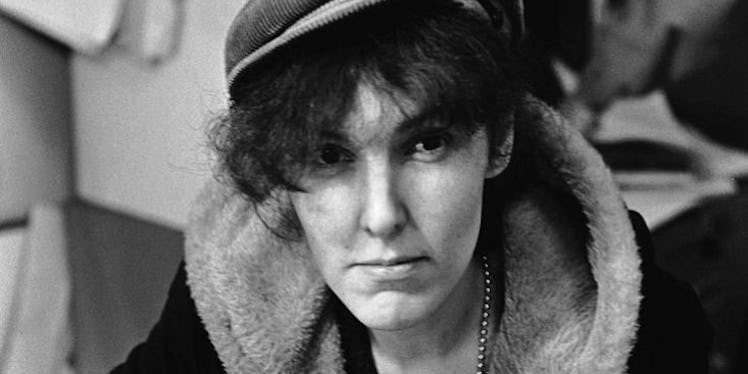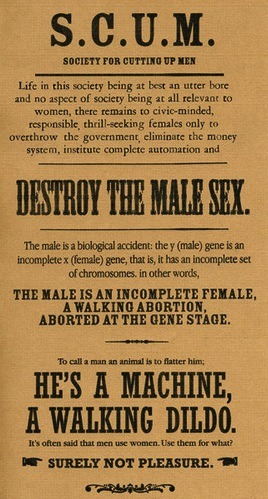
3 Things To Know About Lena Dunham's 'AHS: Cult' Character, Valerie Solanas
While you were trying to recover from the shock and awe of Game of Thrones finale, over in the rest of TV land, they were gearing up for this fall's slate of shows, including FX's American Horror Story, which arrives on screens next week. As part of the hype, Deadline revealed the roles of both Evan Peters and Lena Dunham, which had been rumored on reddit and were correct: they will be playing historical figures. Peters will be portraying various cult leaders in history, while Dunham plays Valerie Solanas. But who is Valerie Solanas, and what does she has to do with cults?
Solanas is probably best known for her association with the infamous pop artist of the 1960s, Andy Warhol, and the 1996 movie based on her life, I Shot Andy Warhol. A historical figure who died in 1988, Dunham will not be appearing in the present day scenes set in 2017, but in what sound like numerous flashbacks, which will be exploring the history of cults throughout the years.
In fact, included among Evan Peter's roles (which include such cult leaders as Charles Manson, David Koresh and Jim Jones) is that of Andy Warhol, suggesting that Murphy plans to portray the pop artist as a cult leader as well.
The S.C.U.M. Manifesto

Solanas was born in 1936. She spent her early years physically and mentally abused by her parents and later her grandfather. She came out as a lesbian in her mid twenties, during the 1950s. This was a time when women were still considered the property of their husbands, and homosexuality was considered a mental disorder and a crime.
Not long after coming out, she began writing her seminal work, The S.C.U.M. Manifesto. It basically postulated that men and their patriarchy were scum, and that women should rise up and murder them all. To quote the opening lines:
"Life" in this "society" being, at best, an utter bore and no aspect of "society" being at all relevant to women, there remains to civic-minded, responsible, thrill-seeking females only to overthrow the government, eliminate the money system, institute complete automation and eliminate the male sex.
The Shooting of Andy Warhol
Solanas found Andy Warhol when she moved from Berkeley California to New York City in the mid 1960s. She first met him by offering him a script to produce called Up Your Ass. When Warhol ignored and lost it, she accused him of stealing it from her. Warhol cast her in a film or two to shut her up, but never seemed to give her the attention she craved.
On June 3, 1968, Solanas shot Andy Warhol. She told people she was going to do it beforehand, and one even called the police, who famously told the person reporting it, "You can't arrest someone because you believe she is going to kill Andy Warhol."
Despite being told to leave when she arrived at the Factory, Solanas waited until Warhol arrived, got on the elevator with him, entered his space known as The Factory and fired three shots, one of which hit him in several vital organs. He survived, but it was a several hour operation.
Diagnosis Of Mental Illness
When Solanas turned herself in a few hours later, she declared she had done it because Warhol had too much control over her life. When the New York Daily News ran the headline "Actress Shoots Andy Warhol" she demanded a retraction, because she wasn't an actress.
Prior to her trial, she was declared mentally unstable, and sent for evaluation. She was diagnosed with chronic paranoid schizophrenia, and it wasn't until a full year went by before she was medicated properly to be considered competent to stand trial.
Her infamy caused women's groups like NOW to argue over The S.C.U.M. Manifesto. Some held her up as a champion of women's rights, while others distanced themselves from her. Either way, it's how her book got published.
She was only sentenced to three years, with one already served. After getting out of jail, she stalked Warhol and was in and out of mental institutions, promoting her book when she could. She died of pneumonia at the age of 52.